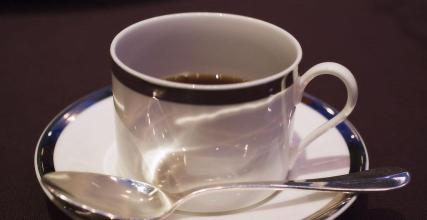What is the most caffeinated coffee in common coffee trees?
Ethelsa species
Esselsa is a variety discovered only in 1904, native to the Charlie River Valley in Africa, small fruit, high yield per plant, especially a drought-resistant variety. The product has strong flavor, slightly bitter taste and less cultivation.
What are the types of coffee trees? There are four common coffee tree varieties, and Xiaobian will introduce them to you. Different varieties of coffee beans have different tastes, but even the same variety of coffee trees, due to different soil, different climates and other effects, the coffee beans grown also have unique flavor Liberia species
The Liberian species, known as the large grain species, is native to Liberia in Africa and to a few countries such as Malaysia. It has a slightly shorter history than the other two coffee trees. The Liberian coffee tree is suitable for lowland cultivation. It has a tall and strong trunk, which is 18 meters high, large and tough leaves, and large fruits and coffee beans. Its seed coat clings to the kernel and is scarlet when mature. Quoted flavor is strong, caffeine content is medium, irritation is strong, and quality is poor. Due to its unique taste, low demand, small cultivation value, so the production is also small, less than 5% of the world's coffee production, bean-shaped larger, the front gradually rounded, convex back, straight cracks.
Robasta coffee trees are native to Madagascar in central and western Africa and Indonesia in Asia, and their production accounts for about 20% to 30% of the world's production. Robasta coffee tree is suitable for planting in lowlands below 500 meters above sea level. It has strong adaptability to the environment. It can resist harsh climate, resist pests and diseases. It does not need too much artificial care when preparing soil, weeding and pruning. It can grow freely in the wild. It is an easy to cultivate coffee tree. However, the finished product tastes bitter than Arabica, the caffeine content is also relatively high, and the quality is also inferior, so most of them are used to make instant coffee. Because it is mainly grown in Africa, most Africans drink robasta coffee.

Important Notice :
前街咖啡 FrontStreet Coffee has moved to new addredd:
FrontStreet Coffee Address: 315,Donghua East Road,GuangZhou
Tel:020 38364473
- Prev

What are the types of coffee? which two cups are used to test the purpose of coffee?
The types of coffee are divided into coffee drinks and coffee beans. Many varieties of coffee served by coffee shops have a variety of flavors, such as chocolate, wine, mint, cloves, lemon juice, cream, etc., and people of different nationalities have different tastes of coffee. Here are some common types of coffee: also known as Milk Coffee, a strong coffee brewed under steam pressure.
- Next

Coffee production and processing in Ethiopia
Ethiopian people are addicted to coffee. In 2003, domestic consumption accounted for 42.3% of the total output, with a per capita consumption of 3 kg. But more than half of the coffee produced each year is used for export to earn foreign exchange. The main exporters include the United States, Italy, the United Kingdom, Sweden, Norway, Greece, France, Belgium, Germany and Australia. Before 1974, the right to produce, process and trade coffee was controlled by
Related
- Does Rose Summer choose Blue, Green or Red? Detailed explanation of Rose Summer Coffee plots and Classification in Panamanian Jade Manor
- What is the difference between the origin, producing area, processing plant, cooperative and manor of coffee beans?
- How fine does the espresso powder fit? how to grind the espresso?
- Sca coffee roasting degree color card coffee roasting degree 8 roasting color values what do you mean?
- The practice of lattes: how to make lattes at home
- Introduction to Indonesian Fine Coffee beans-- Java Coffee producing area of Indonesian Arabica Coffee
- How much will the flavor of light and medium roasted rose summer be expressed? What baking level is rose summer suitable for?
- Introduction to the characteristics of washing, sun-drying or wet-planing coffee commonly used in Mantenin, Indonesia
- Price characteristics of Arabica Coffee Bean Starbucks introduction to Manning Coffee Bean Taste producing area Variety Manor
- What is the authentic Yega flavor? What are the flavor characteristics of the really excellent Yejasuffi coffee beans?

